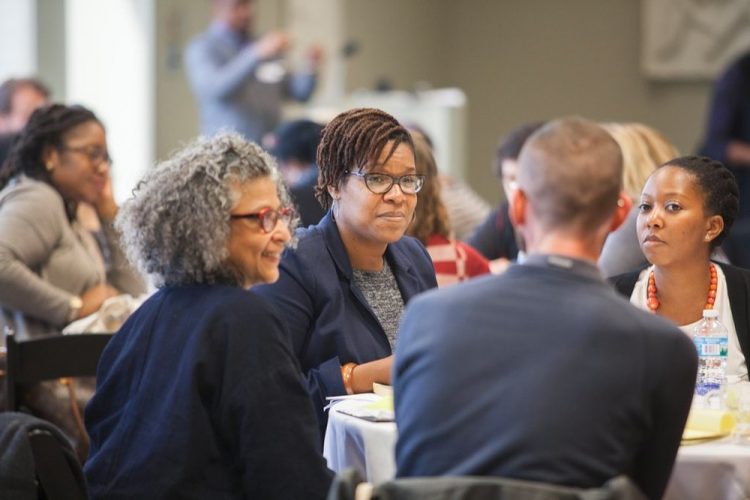MASS Action seeks to align museums with more equitable and inclusive practices. As the museum field begins to shape its identity in the 21st century, MASS Action, in collaboration with stakeholders across the field, is creating a platform for public dialogues on a variety of topics and issues affecting communities locally and globally, leading to actionable practices for greater equity and inclusion in our institutions. Through a series of public convenings and the creation of a toolkit of resources, the intention is to share the strategies and frameworks needed to address these important topics.
Last month, The Phillips Collection’s Chief Diversity Officer Makeba Clay, Senior Curator Elsa Smithgall, and Head of Public Programming Kelley Daley, attended the MASS Action conference at the Minneapolis Institute of Art. In this two part series, we discuss their key takeaways and what’s next.
In part one, we talk with Kelley Daley about her reactions to the conference.
What is the role and responsibility of the museum in responding to issues affecting communities locally and globally? I believe that it is the responsibility of museums to showcase human culture and accomplishment in many different disciplines and therefore, I feel it is pertinent that museums respond to political, societal, and cultural issues that communities close and far experience. If we don’t respond, what are we here for?
Why does this work matter and where do you hope it will lead? I believe that the work in DEAI (Diversity, Equity, Accessibility, and Inclusion) being done at MASS Action matters because the world is not made up of one “type” of person. We live in a city, in a country, and in a world that is diverse and I believe it is important to recognize, value, and welcome that diversity. A museum represents culture, not just one “type” of culture. I hope that this work will lead to a more inclusive experience in museums by creating equity for museum workers, artists, and visitors; by making accessibility a foundational, structural demand versus an afterthought; and by inspiring curators and cultural programmers to redefine and reconsider what museums do (exhibitions and programs). I hope that this work and awareness will become ingrained into every day functions not only at museums, but in daily life for people.
How do the museum’s internal practices need to change in order to align with, and better inform, their public practice? I think that internal practices need to change in terms of what and how organizations display and present information. Instead of constantly showcasing artists in the public knowledge (i.e. Picasso, Matisse, Van Gogh, etc.), museums needs to look beyond the traditional “blockbuster” artists and explore local, underrepresented, and diverse artists. In addition to changing who museums show, we need to redefine how we demonstrate and educate the public on their work. We need to find better ways for visitors to connect to artists they have never heard of. I believe we also need to break down barriers associated with museums (quiet, prestige, elitism, etc.) and have different educational or visual entry points for all visitors. I work closely with our curatorial department to develop programming and I believe The Phillips Collection is actively working to shift internal practices to become a more inclusive museum.
What was your biggest “a-ha” moment at the conference? I was in a break-out session with Dr. Porchia Moore and among the many insightful and powerful things she said, one stuck with me. She said, “If your organization is using ‘community’ as a code word for ‘black, brown, or poor’, you need to start over.” I have long thought this but to hear it validated had a lasting impact on me. Communities are all around us and we need to be very clear about what we mean when we use that term.
How can the museum be used as a site for social action? I believe that the museum can be used as a site for social action by providing thoughtful programming and exhibitions that are steeped in social justice, equity, and accessibility mindsets and movements.

